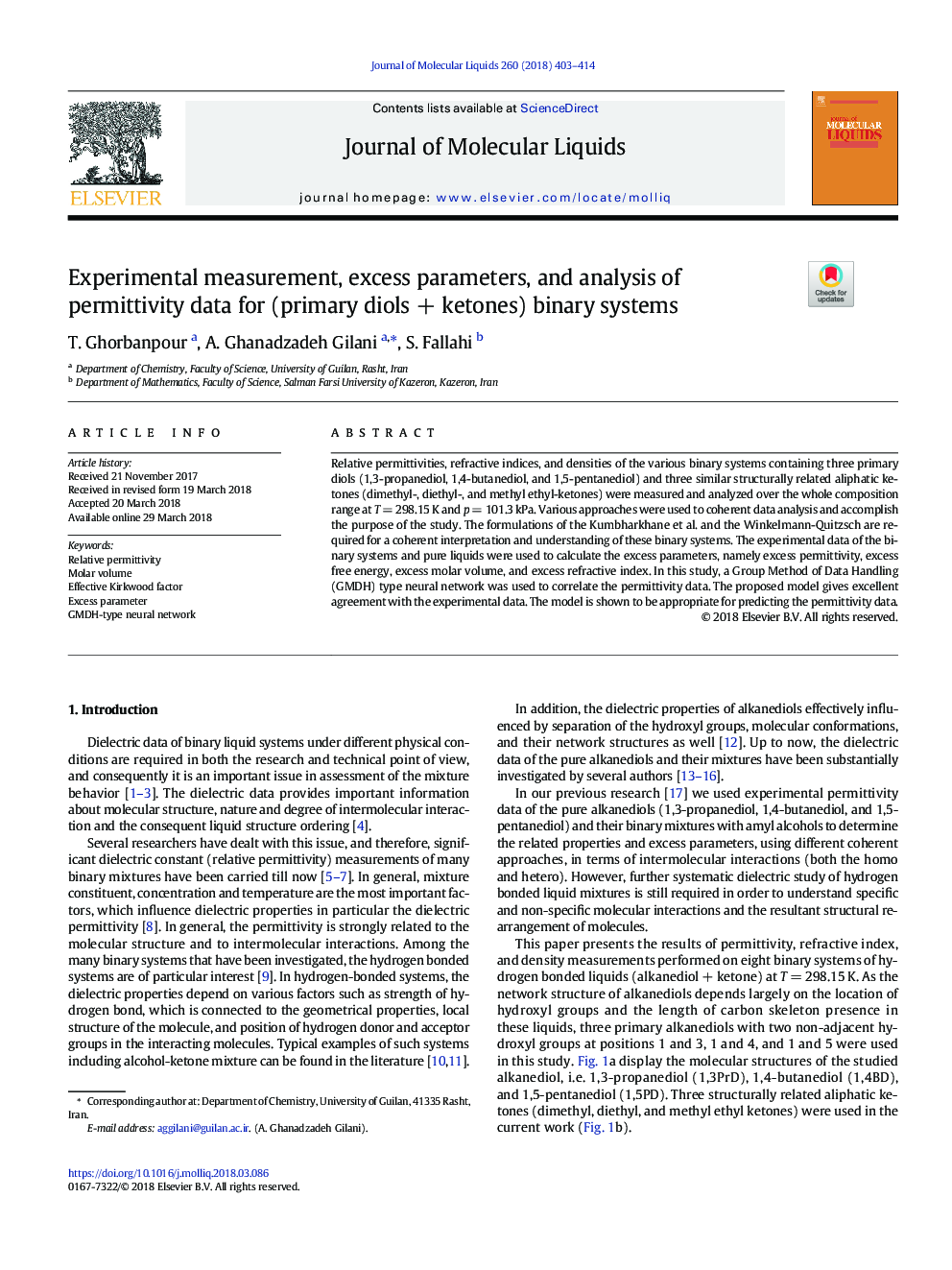| Article ID | Journal | Published Year | Pages | File Type |
|---|---|---|---|---|
| 7842609 | Journal of Molecular Liquids | 2018 | 12 Pages |
Abstract
Relative permittivities, refractive indices, and densities of the various binary systems containing three primary diols (1,3-propanediol, 1,4-butanediol, and 1,5-pentanediol) and three similar structurally related aliphatic ketones (dimethyl-, diethyl-, and methyl ethyl-ketones) were measured and analyzed over the whole composition range at T = 298.15 K and p = 101.3 kPa. Various approaches were used to coherent data analysis and accomplish the purpose of the study. The formulations of the Kumbharkhane et al. and the Winkelmann-Quitzsch are required for a coherent interpretation and understanding of these binary systems. The experimental data of the binary systems and pure liquids were used to calculate the excess parameters, namely excess permittivity, excess free energy, excess molar volume, and excess refractive index. In this study, a Group Method of Data Handling (GMDH) type neural network was used to correlate the permittivity data. The proposed model gives excellent agreement with the experimental data. The model is shown to be appropriate for predicting the permittivity data.
Related Topics
Physical Sciences and Engineering
Chemistry
Physical and Theoretical Chemistry
Authors
T. Ghorbanpour, A. Ghanadzadeh Gilani, S. Fallahi,
